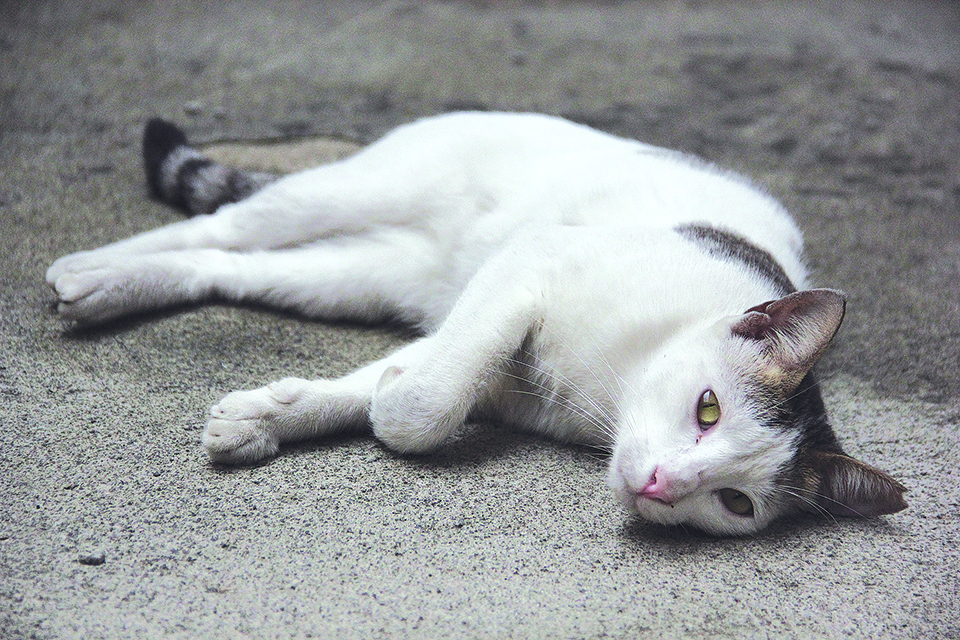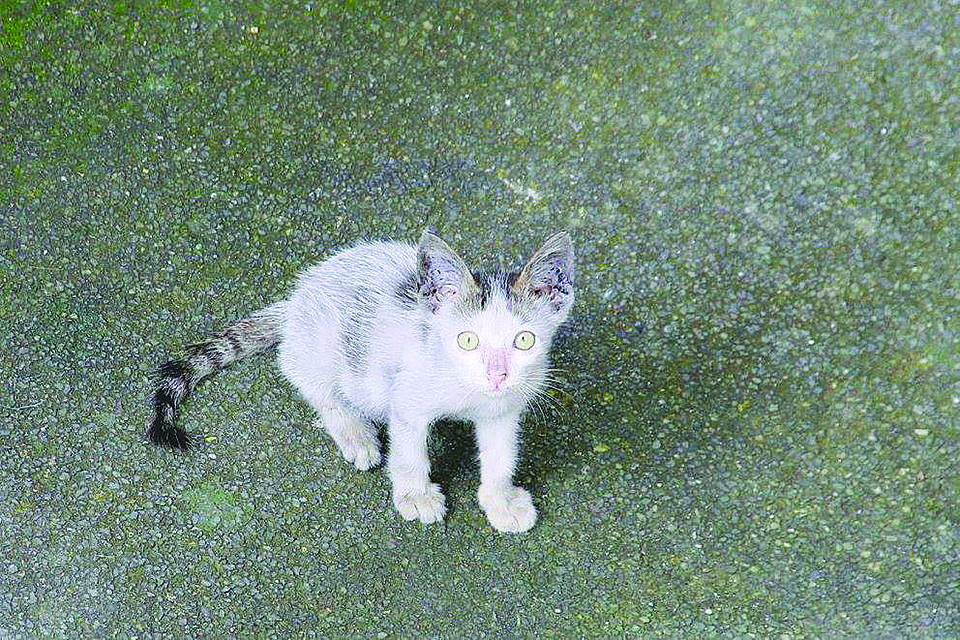Five years ago, a dirty kitten snuck under the hood of our car. We almost never saw who it was except for a white blur that left behind fur in the engine. We named this sneaky ghost Newton and decided to befriend him to put him up for adoption.
Winning a cat’s trust can be harder the older the cat becomes. Newton was around two months old when he snuck into our house and, at that age, it can be challenging for a very feral kitten to trust humans.
Here are five lessons we learned with Newton that could help you befriend and adopt stray cats.

- AVOID SUDDEN MOVEMENTS AND LOUD SOUNDS
With Newton, I had to be careful. Even mere talking spooked him, so I watched him from the second floor of our house or looked under our cars from afar.
Community cats can be sensitive to loud sounds – their skittishness helps them survive outdoors. You can help put them at ease by taking slow steps and not making too much noise. It might help to talk to them in a soft voice once they start to associate you with food.
2. FEED THEM REGULARLY
Since we knew that Newton would sleep under the hood, we decided to leave some canned cat food under the car for him. It usually took several minutes before he sniffed out the food and came out to eat. At first, he refused to eat whenever he saw me sitting nearby, but he eventually learned to do so while he watched me with caution.
I fed Newton three times a day to help him associate me with food. Every feeding time, I sat around and watched him or read a book. It was important that I was around during mealtime for him to see me and, later, the other members of our household as less of a threat.
With every feeding, I also inched his bowl a little closer to me until he allowed me to stroke his fur. After about three weeks, he had learned to trust me enough to grant me the privilege of carrying him in my hands and grooming him with an old toothbrush.

SAFELY INTRODUCING NEW FRIENDS TO YOUR HOME
Newly befriended cats may also bring in parasites, lice, fleas, and diseases, so it’s important to separate them from your resident furbabies at home for a certain period of time. After interacting with a cat you’ve just adopted, always remember to wash your hands and change your clothes to prevent the transmission of disease.
It’s also important to bring them to the vet for parasite medication, deworming, and vaccination.
3. LEARN THEIR PLAY STYLE
Playtime will help your new cat relax and provide space for them to trust you. When cats are playing, they’re not as scared of loud sounds and sudden movements, which makes this the perfect moment for you to learn what kind of play style a furbaby has.
Do they like playing with strings on the ground or with feathers in the air? Maybe they enjoy jumping on leaves or chasing a cat dancer? This stage takes patience, since your newly-befriended animal friend may still have trust issues. Give yourselves the space and patience to get to know each other.
Some community cats might come out of their shell more easily when they have a playmate. Having another cat who is friendly towards you can pave the way for a skittish cat by showing them that you’re an ally whom they can hang around with. The presence of a trusting cat can help a scared one warm up to you even more.

4. HANG OUT WITH THEM
When Newton finally let me carry and pet him, I learned that he absolutely loved being brushed.
Aside from regular play and feeding, quiet time spent on activities such as grooming can help you get to know a cat’s purr-sonality.

5. BE PATIENT
There are days when Newton is still skittish and shy, and that’s okay. Sometimes, loud sounds, such as thunder and loud engines, would scare him into hiding.
Remember that not all community cats whom you befriend will become cuddly cat material. Try to find out what scares your new animal friend and figure out how you can work around their quirks.
It’s also important to understand that befriending a community cat can have its ups and downs. You might have a few days of good experience, and then suddenly, the cat becomes afraid of you again. Just take a deep breath and keep on trying to win their trust with food and playtime.
AN INDOOR CAT IS A SAFE CAT
Take the chance to transition a cat to indoor life. Indoors-only cats will be kept safe from road accidents and cat fights, and they have a lower chance of catching infections and parasites.
Remember as well that wild birds, lizards, and other backyard wildlife will be safe from a cat’s predator instincts if the cat stays at home.






